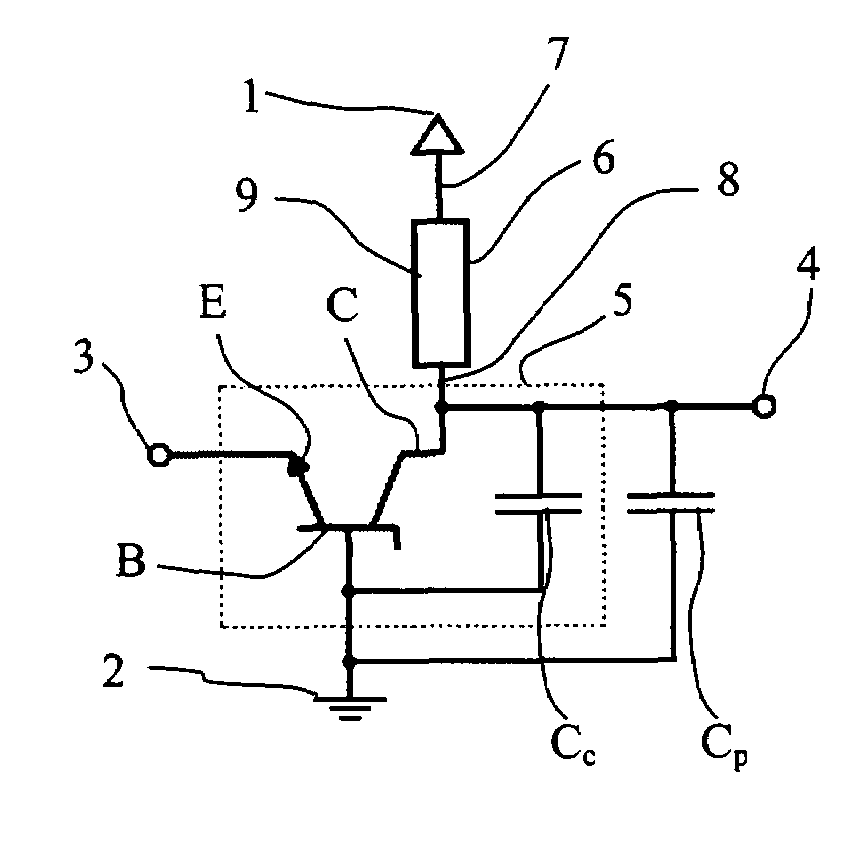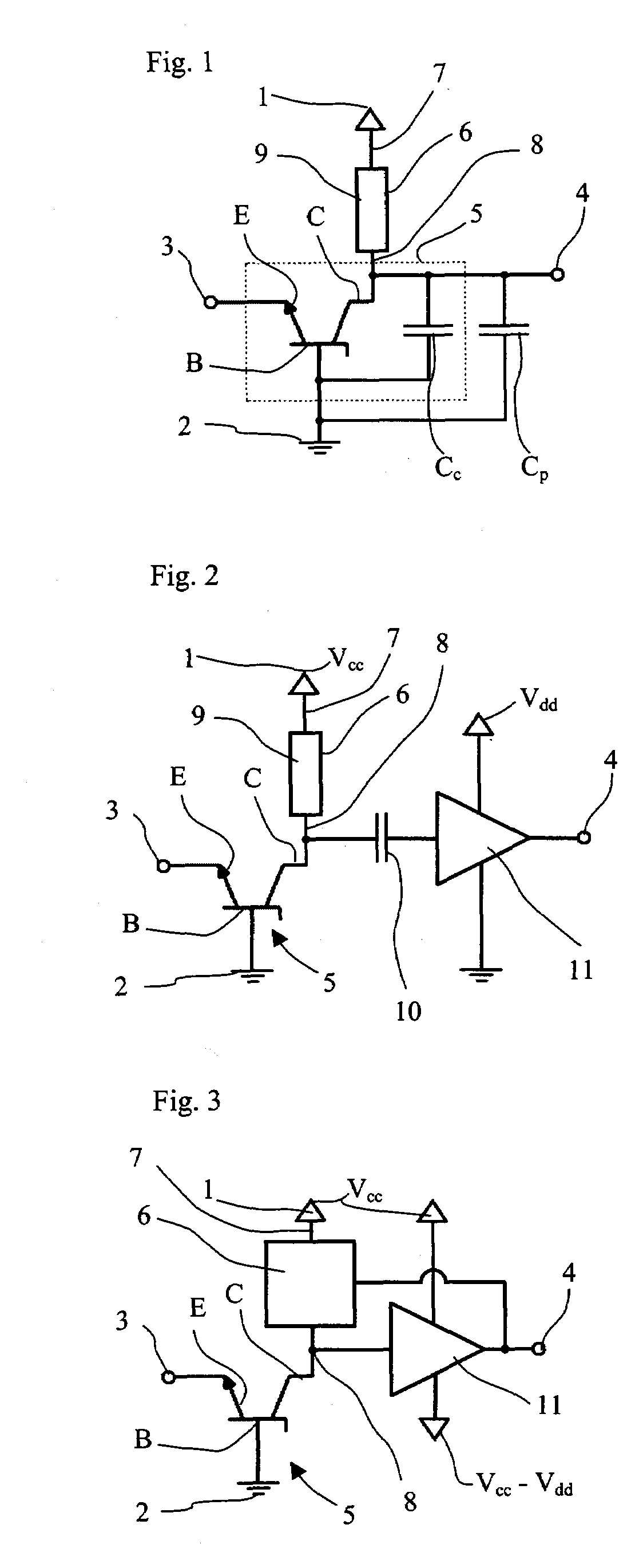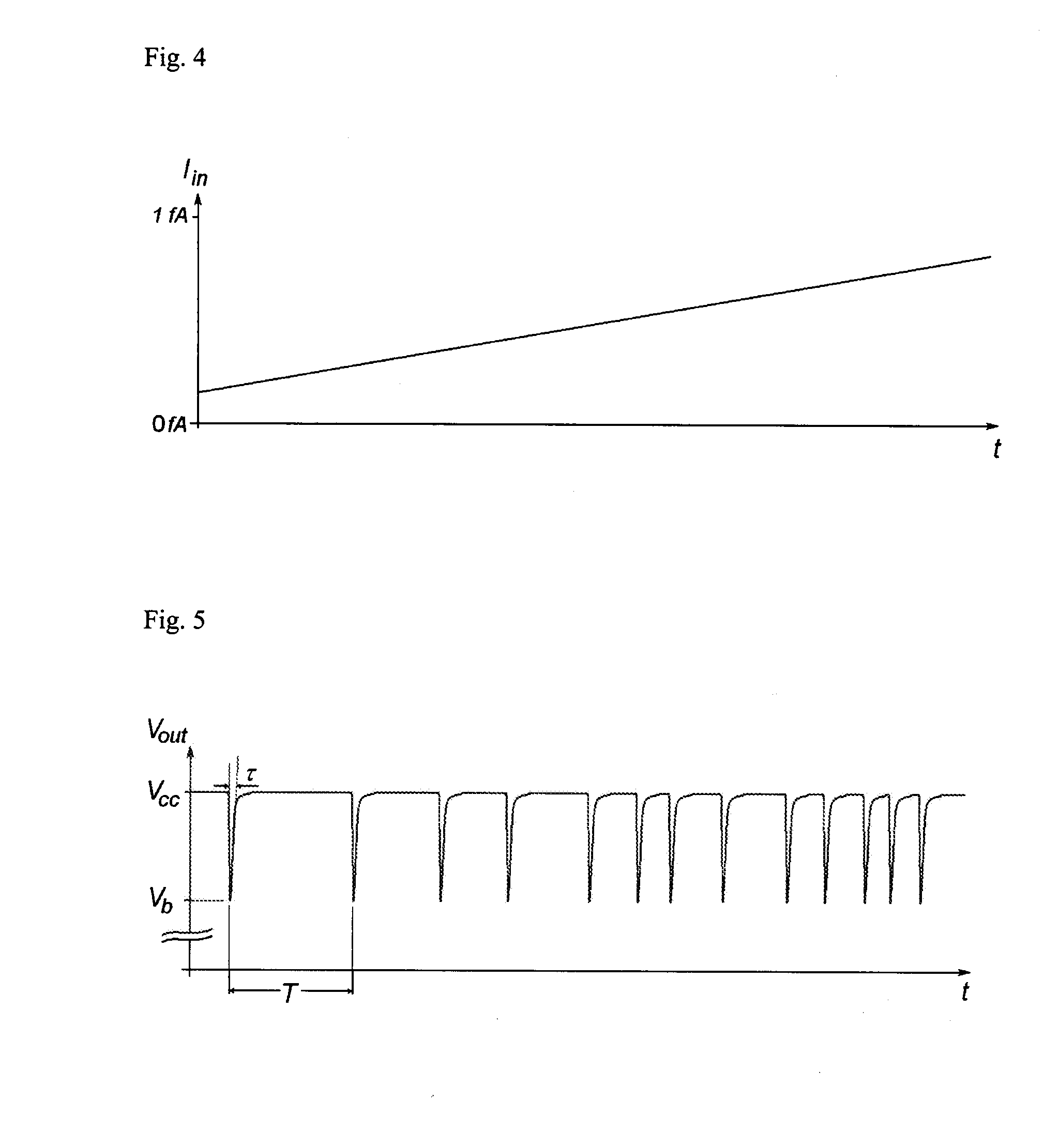Semiconductor Device For Measuring Ultra Small Electrical Currents And Small Voltages
a technology of electrical current and small voltage, applied in the direction of ac/dc measuring bridge, reference comparison, instruments, etc., can solve the problems of unpractical methods and single electrical charge carriers, and achieve the effects of high kinetic energy, easy measurement, and high gain
- Summary
- Abstract
- Description
- Claims
- Application Information
AI Technical Summary
Benefits of technology
Problems solved by technology
Method used
Image
Examples
Embodiment Construction
[0038]FIG. 1 shows a circuit diagram of the semiconductor device according to a first embodiment of the invention. The semiconductor device has a first voltage supply terminal 1, a second voltage supply terminal 2, an input terminal 3 and an output terminal 4. The semiconductor device comprises a bipolar transistor 5 having a base B, an emitter E and a collector C, and a quenching and recharging circuit 6. The emitter E is directly connected to the input terminal 3, the collector C is directly connected to the output terminal 4 and the base B is connected to the second voltage supply terminal 2. The quenching and recharging circuit 6 is a passive circuit having a first terminal 7 connected to the first supply voltage terminal 1 and a second terminal 8 connected to the collector C. In the present embodiment the quenching and recharging circuit 6 is an ohmic resistor 9. The capacitances Cc and Cp are not real capacitors but inherently present capacitances. Their influence on the prope...
PUM
 Login to View More
Login to View More Abstract
Description
Claims
Application Information
 Login to View More
Login to View More - R&D
- Intellectual Property
- Life Sciences
- Materials
- Tech Scout
- Unparalleled Data Quality
- Higher Quality Content
- 60% Fewer Hallucinations
Browse by: Latest US Patents, China's latest patents, Technical Efficacy Thesaurus, Application Domain, Technology Topic, Popular Technical Reports.
© 2025 PatSnap. All rights reserved.Legal|Privacy policy|Modern Slavery Act Transparency Statement|Sitemap|About US| Contact US: help@patsnap.com



